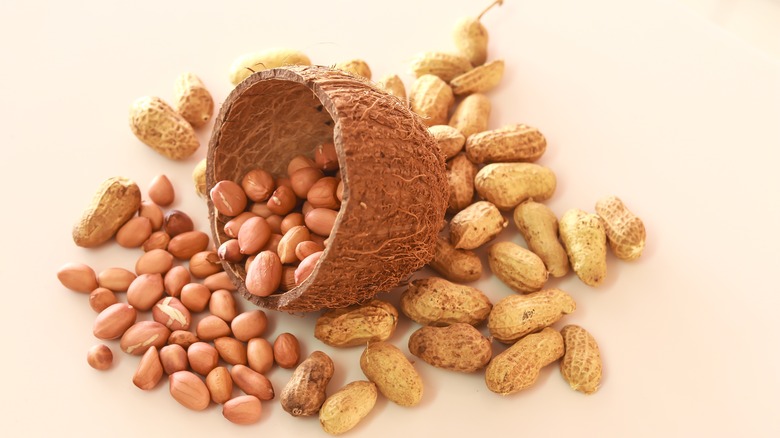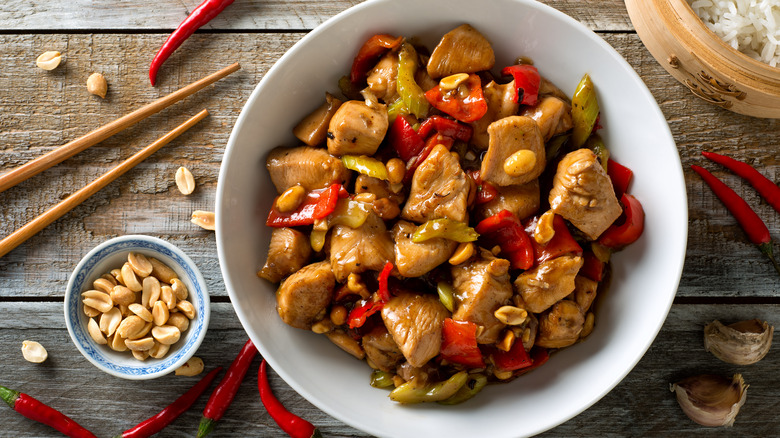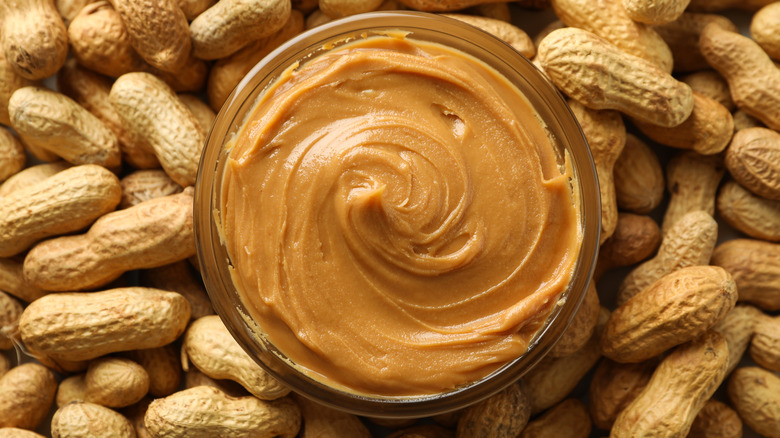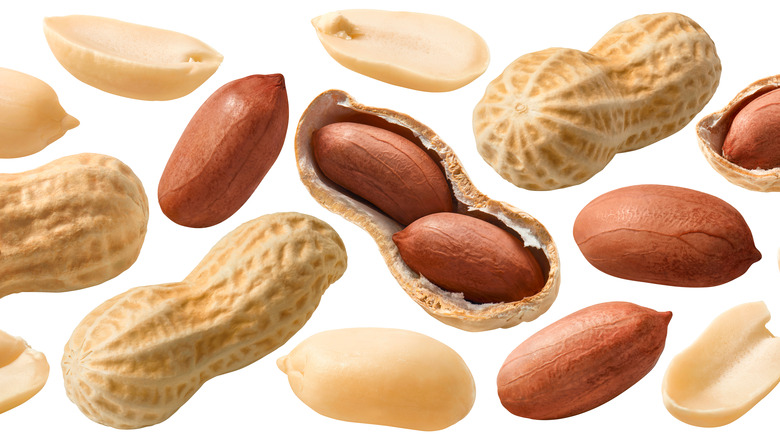Most Of The World's Peanuts Come From This Country
For many Americans, peanut butter and jelly is the peanut's flagship form, and the sandwich is a school lunch box made for kids and adults. Plus, it's versatile enough to appease crunchy or smooth peanut butter fans, settling the debate once and for all. According to the National Peanut Board, crunchy peanut butter reigns supreme on the West Coast; meanwhile, the smooth version dominates on the East Coast.
Despite the popularity of peanut butter, peanuts have been used that far exceed spreads. Sure, you can use peanut butter in an assortment of dishes that range from sweet to savory. Try a peanut butter sundae, for instance, or add a spoonful of the spread to your next homemade curry. However, peanuts in their truest, crunchiest form leave equal opportunity for variety. Peanut-topped stir-frys let the nut's crunch shine, whereas peanut soups balance an assortment of textures. Peanut-based dishes are certainly plentiful in the United States, though North America is not the legume's leading producer, and the U.S. isn't even in the world's top three. Instead, peanuts are king in one country whose cuisine takes full advantage of the nut's crunch and flavor.
China produces the largest percentage of the world's peanuts
If you've ever savored the peanuts in kung pao chicken, you'll understand this statistic: China leads the world in peanut production, via WorldAtlas. According to Statista, China produced 18.3 million metric tons of peanuts in 2021 alone. This production level denotes an upward trend; the country delivered 17.99 million metric tons of legumes in 2020. For context, the world production of peanuts rounded off at roughly 47 million metric tons in 2020, per The American Peanut Council.
Given the nut's popularity in Asian fare, it's easy to understand how China leads the pack. Peanuts not only characterize Chinese takeout and cuisine but also contribute significantly to the Chinese economy. Per WorldAtlas, roughly 70% of the nuts originate from Jiangsu, Shandong, Guangdong, and Henan provinces. Climate woes have begun to threaten Chinese peanut production, however. Bloomberg reported that Chinese farmers had found empty peanut shells due to droughts and extreme weather conditions during pivotal harvesting and growth periods. The country's peanut output could decline by up to 30% this season alone. Trailing behind China in the peanut production rankings, India, then Nigeria, round off the top three peanut producers, per Mundus Agri.
The United States takes fourth place in world peanut production
In 2021, the United States produced more than six billion pounds of peanuts, per Statista. This statistic may seem like more than enough peanuts to last a lifetime, but it actually marks a significant decrease within the last five years. In 2017, the United States produced more than seven billion pounds of the popular legume. While that number has since declined, peanuts remain consistently popular in North America. They are commercially grown in three main regions.
According to the National Peanut Board, 13 states predominantly produce peanut butter in the United States. These states fall under three regions: the Southeast, Virginia-Carolina, and Southwest, and six states stand out as the most significant peanut producers in those regions. As of 2019, Georgia is to thank for most of the country's peanut growth; the state best known for its peaches also grows roughly 50% of America's peanuts.
Enjoy peanuts in a multitude of ways, from crunchy nut butters to savory Asian fare
Whether in the United States or China, peanuts are an accessible food packed with flavor and texture. If you're heading to China anytime soon, CNN recommends trying several dishes, many of which utilize the crunchy nut. Dan dan noodles, for instance, pair crunchy peanuts with noodles, meat, scallions, and spices. Meanwhile, the aforementioned kung pao chicken deep fries the nut for a similarly savory staple. In the United States, however, peanut butter is widely correlated with peanuts and is one of the more popular nut forms. When making homemade peanut butter, make sure to roast your peanuts first. However, store-bought brands like Jif and Skippy have long been solidified as household names.
Over the span of just one year, Americans eat 700 million pounds of peanut butter, which is enough to coat the floor of the grand canyon, per Texas Peanuts. In fact, those who eat peanut butter dramatically overpower those who don't; according to Statista, roughly 300 million Americans eat peanut butter, whereas 32 million stay away. So no matter how or where you take your peanuts, know that you're not alone. The legume is widely produced — and widely eaten — for a good reason.



